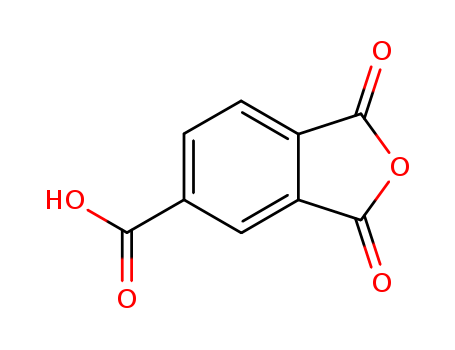|
Chemical Properties |
Colorless flaky crystal or liquid, similar fragrance to bitter almonds and Chervil, sweet taste, melting point 23℃,boiling point 243℃, soluble in ethanol and non-volatile oil, diluted inorganic acid and most organic solvents, slightly soluble in water. |
|
Usage |
-
A kind of Spice
-
Mainly used for the preparation of vanilla spice.
-
Used in the production of pesticides, medicine, rubber accelerator, color film sensitizing agent, dyes, anion exchange resin and so on.
-
Used as gas chromatographic stationary liquid and analytical reagent,
-
Used in the pharmaceutical industry.
-
Used for the production of drugs for prevention and treatment of schistosomiasis (praziquantel), antimalarial, chemical reagents, etc.
-
Isoquinoline can be oxidized to produce Pyridine carboxylic acid And Its derivatives can be used for the production of color films and dyes. It can be used as Iron preservative, soluble phenolic resin curing agent, etc. Its Addition compounds formed with metals can be used for the quantitative determination of nickel and cadmium and the qualitative determination of noble metal. Isoquinoline can also be used as a catalyst in the benzoylation reaction and polymerization of α-olefin.
|
|
Usage limitation |
FEMA(mg/kg): Soft drinks 0.25,, cold drinks 0.25, sweets1.0; bakery products 0.004-1.0, moderate use (FDA§172.515,2000). |
|
Preparation |
Crude quinoline containing 83% quinoline, 15% isoquinoline and 2% methyl quinoline can be used as the raw material for the production of isoquinoline. However, the Distillation section from 237.5-239.5℃ and 243-246℃ is generally collected and used as the raw material for the extraction of isoquinoline. 13-28% of 2-methyl quinoline and 3.9% quinoline can be separated from this distillation section in the form of hydrochloride salt.
The isoquinoline fraction reacted with 98% sulfuric acid at 35℃ in alcohol solution to produce isoquinoline sulfonate. Isoquinoline sulfonate crystallizes faster than its homologues in the cooling process. After filtration, recrystallization was carried out with 85% ethanol, and then decomposed with 20% ammonia water. The generated oil layer was firstly washed with water, and then rectified to collect the fraction at242-243℃to obtain Isoquinoline with purity greater than 95% It is separated by repeated freezing the coal tar with the boiling rangeat 238~250℃. |
|
Content analysis |
Determined by Gas chromatography and liquid chromatography and the chromatographic test conditions are the same as α-allyl ionone (03411). |
|
Category |
flammable liquid |
|
Toxicity grade |
middle toxic |
|
Toxicity |
GRAS(FEMA) |
|
Acute toxicity |
Oral – rat LD50: 360mg/kg |
|
Stimulus data |
Skin-rabbit 10 mg/24h mild; eye-rabbit 250 μg severe. |
|
Flammability hazard characteristics |
Flammable in case of fire, high temperature and oxidants, Combustion produces toxic nitrogen oxide smog. |
|
Storage |
Completely packed, handle with care; Ventilated warehouse, away from open flame, high temperature, separated from strong acids. |
|
Fire extinguishing agent |
foam, carbon dioxide, dry powder, dry sand, water spray. |
|
Description |
Isoquinoline has an odor reminiscent of benzaldehyde and anise. Isoquinoline may be obtained from coal tar (238 - 250°C boiling fraction); it is isolated as the sulfate or as is by repeated freezing. |
|
Chemical Properties |
Isoquinoline has a heavy sweet balsamic, herbaceous odor. |
|
Chemical Properties |
LIGHT BROWN LOW MELTLING SOLID |
|
Occurrence |
Reported found in milk and dried bonito; also occurs in coal tar, where it is formed during the dry distillation of coal |
|
Uses |
Manufacture of pharmaceuticals (such as nicotinic acid), dyes, insecticides, rubber accelerators, and in organic synthesis. |
|
Uses |
It is used in the manufacture of dyes, pharmaceuticals,and insecticides, and as an antimalarialagent. |
|
Preparation |
Obtained from coal tar (238 to 250°C boiling fraction); it is isolated as the sulfate or as is by repeated freezing |
|
Definition |
ChEBI: An ortho-fused heteroarene that is a benzopyridine in which the N atom not directly attached to the benzene ring. |
|
Hazard |
Toxic by ingestion. |
|
Health Hazard |
The toxic properties of this compound aresimilar to those of quinoline. It is moderatelytoxic in rats and rabbits by oral routeand skin absorption. The oral LD50 value inrats is 360 mg/kg. The irritation effects onskin and eyes in rabbits were moderate tosevere. Carcinogenicity due to isoquinolinein animals or humans is not known. The histidinereversion–Ames test for mutagenicitywas inconclusive. |
|
Fire Hazard |
Noncombustible liquid (solid). |
|
Purification Methods |
Dry isoquinoline with Linde type 5A molecular sieves or Na2SO4 and fractionally distil at reduced pressure. Alternatively, it can be refluxed with, and distilled from, BaO. It is also purified by fractional crystallisation from the melt and distilled from zinc dust. It forms a phosphate (m 135o) and a picrate (m 223o), which are purified by crystallisation, and the free base can be recovered and distilled. [Packer et al. J Am Chem Soc 80 905 1958.] The procedure for purification via the picrate comprises the addition of quinoline to picric acid dissolved in the minimum volume of 95% EtOH to yield yellow crystals which are washed with EtOH and air dried before recrystallising from acetonitrile. The crystals are dissolved in dimethyl sulfoxide (previously dried over 4A molecular sieves) and passed through a basic alumina column, on which picric acid is adsorbed. The free base in the effluent is extracted with n-pentane and distilled under vacuum. Traces of solvent from small quantities are removed by vapour phase chromatography. The hydrochloride crystallises from EtOH with m 193o. [Mooman & Anton J Phys Chem 80 2243 1976, Beilstein 20 II 236, 20 III/IV 3410, 20/7 V 333.] |









